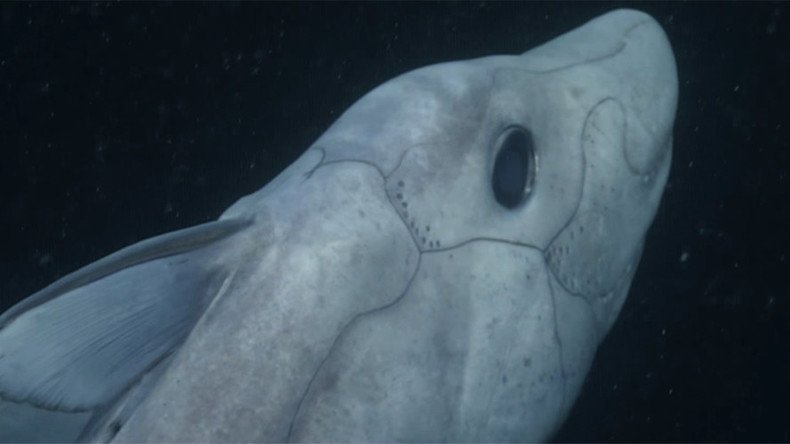‘Ghost shark’ caught on camera for first time in Northern Hemisphere (VIDEO)

The chimaera, also known as the ‘ghost shark,' has been spotted for the first time on camera in the northern hemisphere. Researchers using remote cameras observed the elusive specimen off the coasts of California and Hawaii.
Chimaera were previously only believed to occupy parts of the Southern Hemisphere around New Caledonia until the recent findings by the Monterey Bay Aquarium Research Institute (MBARI) proved otherwise.
“Normally, people probably wouldn’t have been looking around in this area, so it’s a little bit of dumb luck,” Dave Ebert, from the Pacific Shark Research Center, told National Geographic. The video was filmed by geologists from the MBARI using a remotely-operated vehicle to explore the depths of the northern Pacific.
“It’s almost a little comical. It would come up and bounce its nose off the lens and swim around and come back,” Ebert said, commenting that the shark would play havoc with the filming material.
Chimaera live deep in the ocean beyond where the light of the sun can reach, earning them their spooky nickname. Despite being older than the dinosaurs, little is known about the species, which split off from their closest relatives, rays and sharks, 300 million years ago.
It’s thought chimaera’s lack the bite of other sharks, instead using mineralized tooth plates to chew their prey, usually mollusks, worms and other leftovers found at such great depths.
Most fascinating about chimaera’s is the male's retractable sex organ, which can be found on its head.
READ MORE: Watch rare killer whales eat a shark in epic drone footage (VIDEO)
Ebert and his team will have to get back in the ocean, as the species cannot be officially verified on camera footage alone, a DNA sample will be required.
Next, Ebert plans to wander around fish markets hoping to chance upon a specimen. Failing that, a trawling ship will be employed to scrape the ocean’s surface for a dead specimen.












